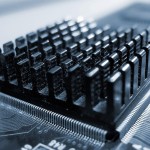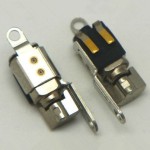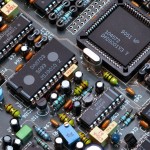- HOME
- INDUSTRY SOLUTION
- AEROSPACE
- AUTOMOTIVE INDUSTRIES
- CEMENTED CARBIDES
- CHEMICALS
- COATING TECHNOLOGY
- DEFENCE
- DIAMOND TOOLS
- ELECTRONICS & ELECTRICAL INDUSTRIES
- ENERGY
- MEDICAL & BIO MEDICAL TECHNOLOGY
- MINING
- OIL AND GAS INDUSTRIES
- OTHER INDUSTRIES
- POWER GENERATION
- SEMICINDUCTOR & ELECTRONICS
- SPECIAL APPLICATION
- TUNGSTEN IN STEEL
- PRODUCTS
- AMMONIUM PARA TUNGSTATE
- AMMONIUM META TUNGSTATE
- TUNGSTEN TRIOXIDE POWDER (YTO)
- BLUE TUNGSTEN TRIOXIDE
- SODIUM TUNGSTATE
- CALCIUM TUNGSTATE
- TUNGSTIC ACID
- TUNGSTEN METAL POWDER
- TUNGSTEN CARBIDE POWDER
- GRADED POWDER RTP
- FUSED TUNGSTEN CARBIDE POWDER
- COBALT
- COBALT OXIDE
- COBALT NITRATE
- COBALT CHLORIDE
- COBALT SULPHATE
- COBALT CARBONATE
- COBALT ACETATE
- RESEARCH
- PURCHASE
- CONTACT
ELECTRONICS & ELECTRICAL INDUSTRIES
Tungsten is practically the only material used for electron emitters. Although other, more electropositive, metals would yield higher emission rates, the advantage of tungsten is its extremely low vapor pressure even at high temperatures.
This property is also important for electrical contact materials. While more conductive metals like copper or silver evaporate under the conditions of an electric arc, tungsten withstands these.
Tungsten is one of the most important components in modern integrated circuitry and tungsten-copper heat sinks are used to remove the heat of microelectronic devices.
TIG WELDING
Thoria or rare earth oxide rod electrodes are used for inert gas welding (TIG welding electrodes), as well as High Intensity Discharge (HID) lamps. Tungsten-base materials are used for cathodes in power grit tubes, radio valves, electron guns, electron microscopes and plasma generators. Tungsten is a potential candidate for crucial parts in thermionic energy conversion systems and cesium-ion engines for extraterrestrial applications.
ELECTRICAL CONTACT MATERIALS
Tungsten runs across our life when strong currents are switched; the best example is the car horn. Tungsten electrodes are also used for ignition contact breakers, voltage regulators and safety switches.
Sintered or infiltrated tungsten-copper, tungsten-silver or tungsten carbide-silver contacts are used in high performance switches, for the high voltage (72.5-800kV), medium voltage (5-38kV) and low voltage (<1kV) range. The magnitude of switching currents can attain 100kA, and arc temperatures in excess of 10,000K can prevail for milliseconds during switching.
Nozzles and electrodes for plasma spray guns, resistance welding or spark erosion are made of W-Cu, W-CuNi or W-Ag.
HIGH TEMPERATURE APPLICATION
High temperature furnace parts (heating coils, radiation shields, charge carriers) withstand temperatures of up to 2,800ºC. Tungsten nozzles with iridium inserts are used for the production of glass, rock and ceramic wool for insulation applications. Seamless cylindrical tungsten crucibles are used for the growing of Single Crystals, required for semiconductors, LEDs, X-ray detectors, data storage or optical media.
Tungsten-rhenium thermocouples are used for measuring temperatures of 1,500ºC to above 2,000ºC.
X-RAY TUBES
X-ray tubes for medical use are not only equipped with a tungsten emitter coil, but also with a rotary (or static) anode made of tungsten or tungsten-rhenium. Important here are not only the low vapor pressure, but also tungsten’s good heat conductivity and the wavelength of the resulting X-rays.
Tungsten electrodes are also used in the X-ray generators for security checks at the airport, or for structural analysis of materials.
INTEGRATED CIRCUIT
Modern computer processors generate a heat output per square centimeter similar to a household cooker surface. Tungsten-copper heat sinks and the processor fan remove the heat. They possess both high thermal conductivity and low thermal expansion as close as possible to that of the Si and Ga-As semiconductors as well as the packaging materials. Heat sinks are also used as base plates for IC packages, in optoelectronics or microwave applications.
Tungsten is among the most important components in modern integrated circuitry. All advanced chips rely on tungsten contacts (vias, plugs) to connect the transistors and the interconnecting layers.



